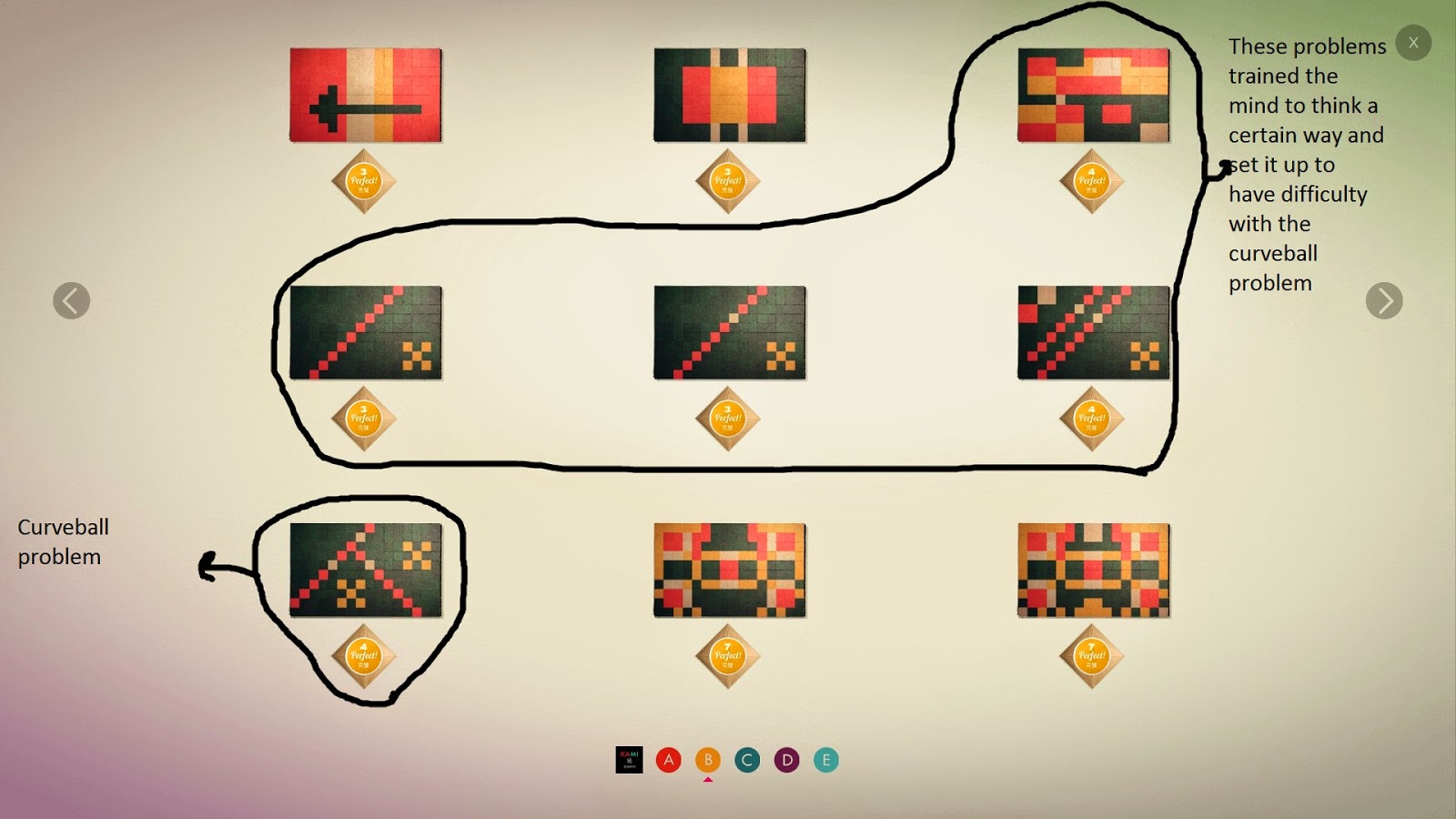In this post I would like to make a summary of what I have learned from this vlog, and from all the other activities I participate in concerning game design.
Point and click adventure games
P&C adventure games are unique from most other games in that they don't follow all the game design elements that most games typically follow. Since P&C games are 100% story driven with the occasional puzzle, the rules that apply are ones that promote proper story telling. Here is what I have picked up so far.
- All events in the game must be coherent with the overall theme of the story. I wish I didn't have to mention this but I have noticed that some designers let there P&C game become too "gamey" and it gets in the way of the story. What is let over is a lackluster story inside a lackluster game. Designers of P&C games....please stick to the story. If you want a mechanic driven game then make a mechanic driven game, don't try to cram your story into it. please read this for more elaboration on this point.
- Since P&C games are very light with the mechanics they naturally lend themselves to puzzles - which are easy to implement because they don't require any elaborate designs. Just plug in and play - like a mini game. The only issue is when the puzzle once again has nothing to do with the story or the solution to the puzzle is completely detached from the reality within the story.
- If the puzzle in the P&C game is one of those story driven puzzles where you need to use some sort of item found within the game on some other item, or give the item to a NPC, or bash the item over your head - cause a coma - and find out the solution was within your heart all along; THERE MUST BE CLEAR COMMUNICATION from the game designer to the player as to what the parameters are to solve the puzzle. This communication occurs via 2 and only 2 things: dialog between characters in the game, and logical relationships between in-game items. A logical relationship between in-game items is NOT "player must take the piece of paper, place it in a pile of wet leaves and start it on fire". With only 2 forms of communication available there should never be a point where a player is left asking, "WTF am I SUPPOSED TO DO!!!!!!" If this is the case, we have a case of possible good game designer, horrible story teller.
- I am convinced that the requirements for a good solid fun P&C game, one doesn't need to be well versed in the complex relationships of various game mechanics but only need be a good story teller.
Puzzle games
The debate will never end as to whether or not Puzzle games are actually games but I don't care. If you can sell it on a platform with other "games"...its a goddamn game.
- Puzzle games need to be designed like you would help a baby up some stairs. you would never show the baby the stairs, run up them, and wait for the baby to follow. Similarly, you should never show the player how to play your puzzle game, then disappear as the player tries to internalize all the information alone. It is the job of the designer of puzzle games to organize the levels in a way that the levels themselves SHOW the player how to play the game..step by step. The designer communicates to the player all the expectations of the game VIA the levels themselves.
- There seems to be many ways to add difficulty to a puzzle game. One way I learned from the game KAMI is by dedicating about 3-4 levels to train the players brain to think a certain way to solve a puzzle and then following those levels have a "curve-ball" level. This curve-ball level will appear to be solved using the same logic that has been ingrained in the players brain, but it isn't. This will require the player to take a step back and reassess the puzzle with a clear mind. This process is difficult for some people but once done is incredibly gratifying.
The four problems circled in the picture are the priming problems. They prime the mind to think a certain way. In this example they are communicating to the player to focus on the white dots for the solution. Then the player runs into the curve-ball problem and thinks he should focus on the white dot but soon realizes there is no possible solution that way.
- The solution to any problem must only use techniques that the player is aware of and feels comfortable using. This means that the techniques must have been properly communicated to the player prior to the current problem. The difficulty of a problem then rests not on some cryptic discovery but by simply using what is already known and comfortable to the player in a way not yet experienced by the player. To use the picture above again. The idea of focusing on one spot to find the solution is used with every problem circled. Only that the solution to the curve-ball problem is to not focus on the white spots but to focus on the red spot that connects the two red lines. Same idea - different point of view.
As I learn more, I will continue to update this blog with my discoveries. Good night/day/later.
nine'O'three

No comments:
Post a Comment